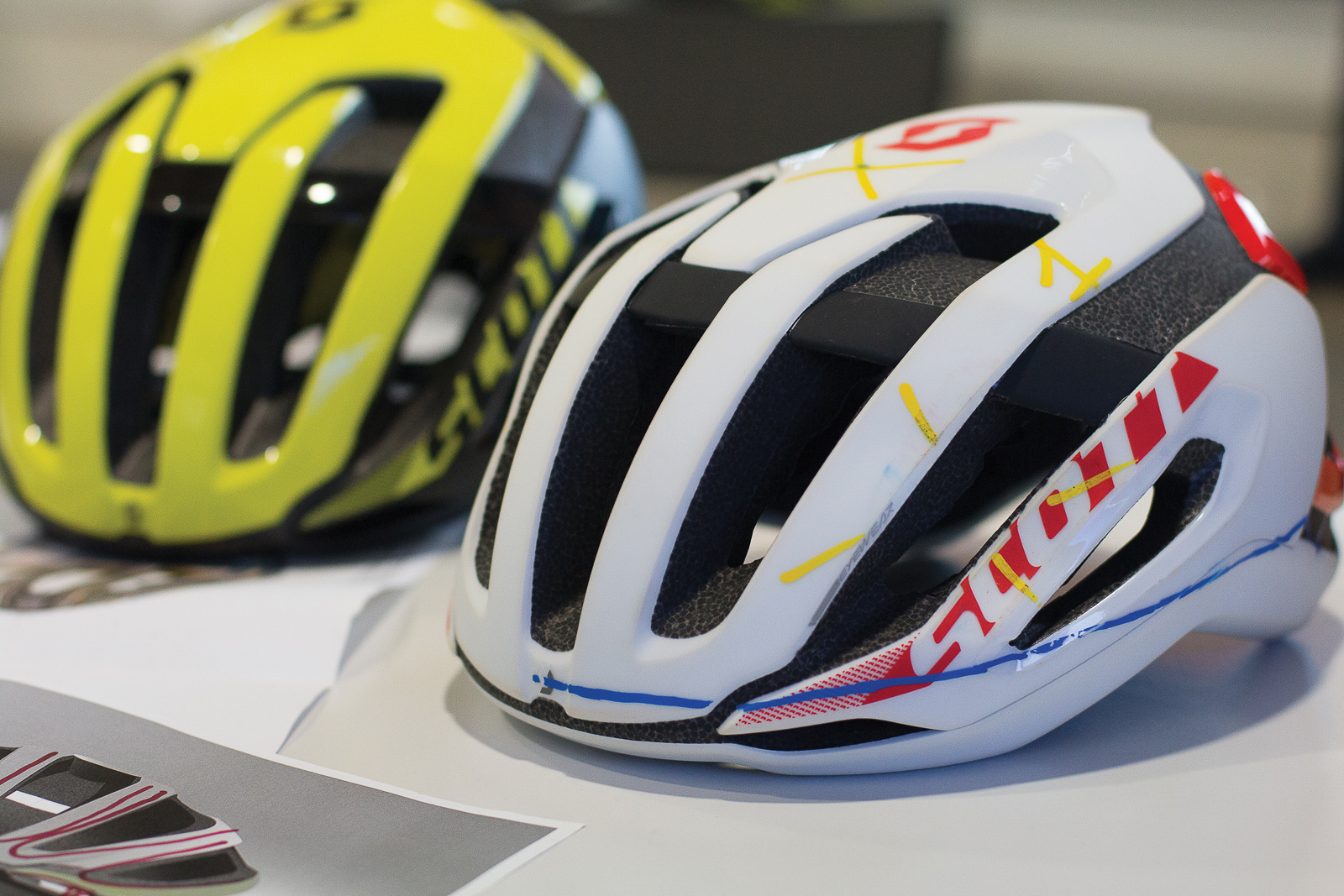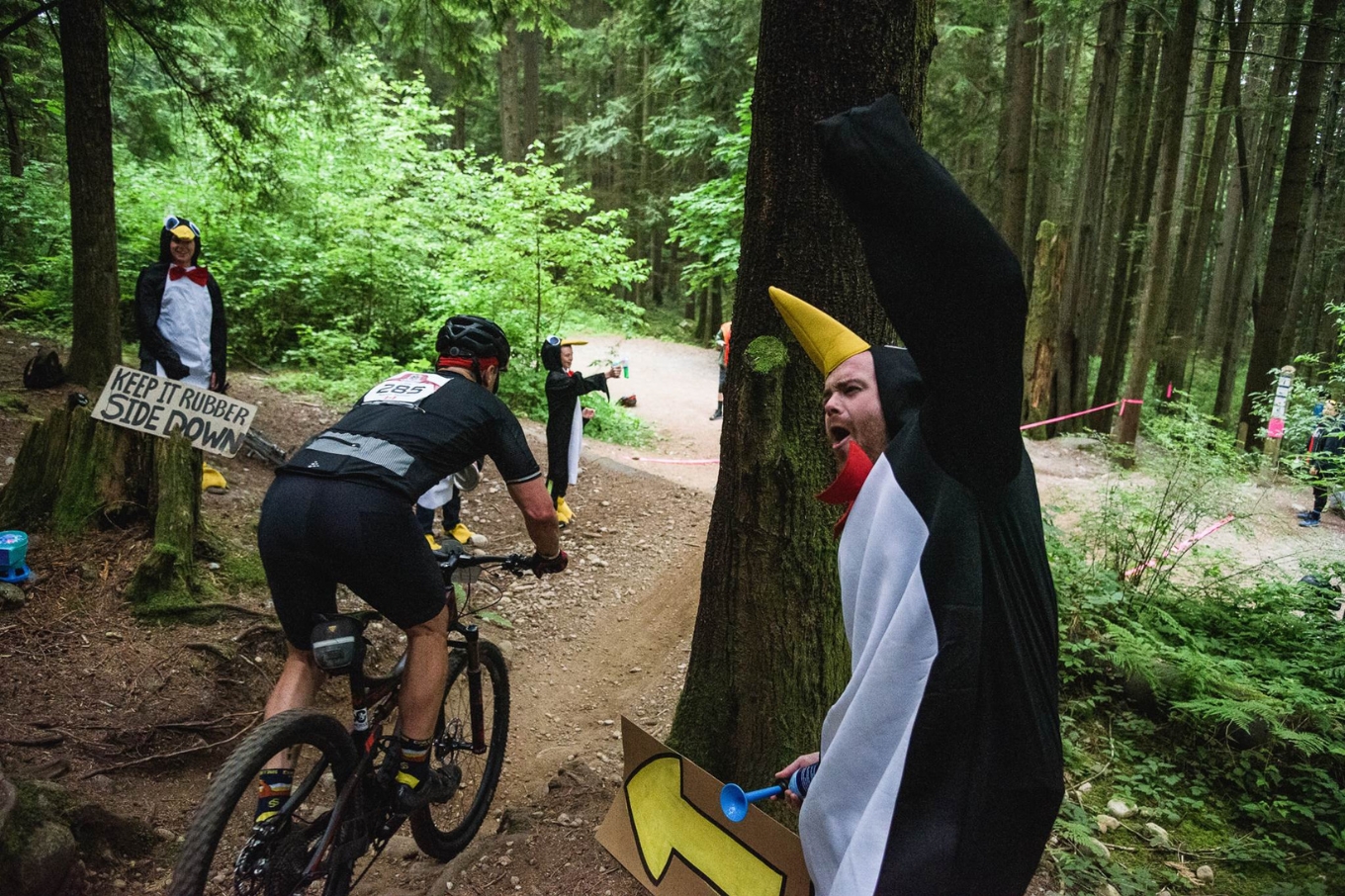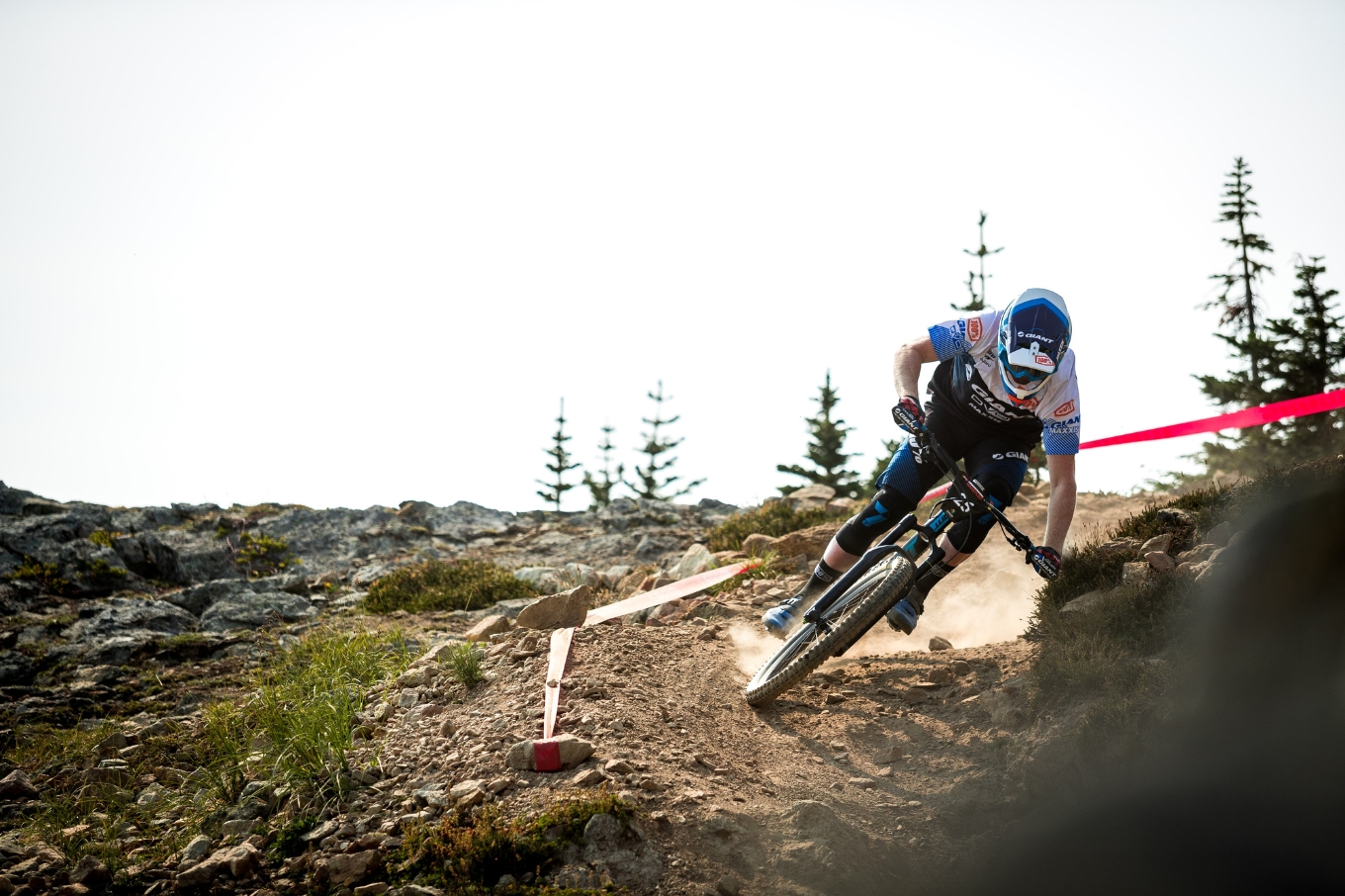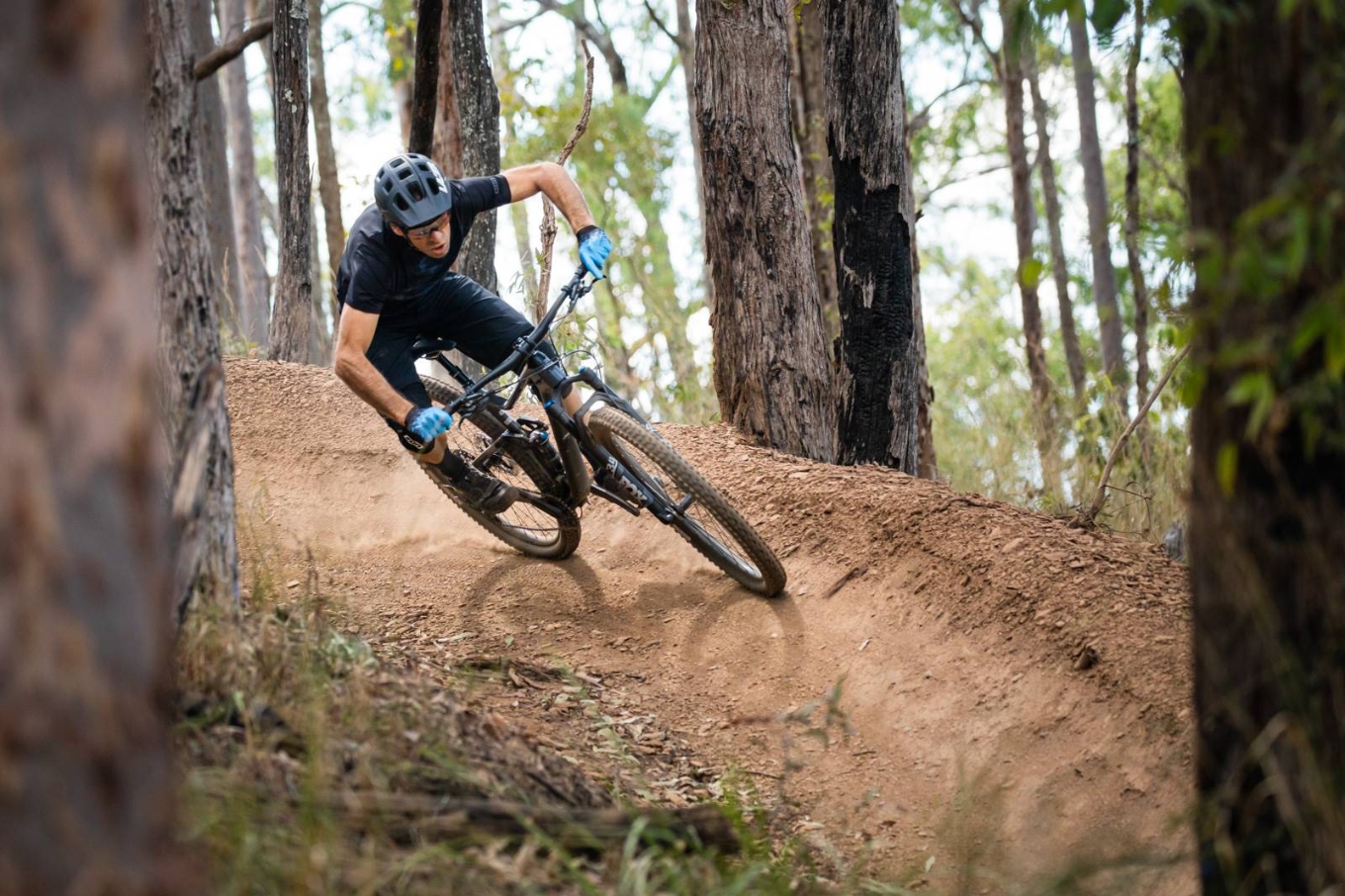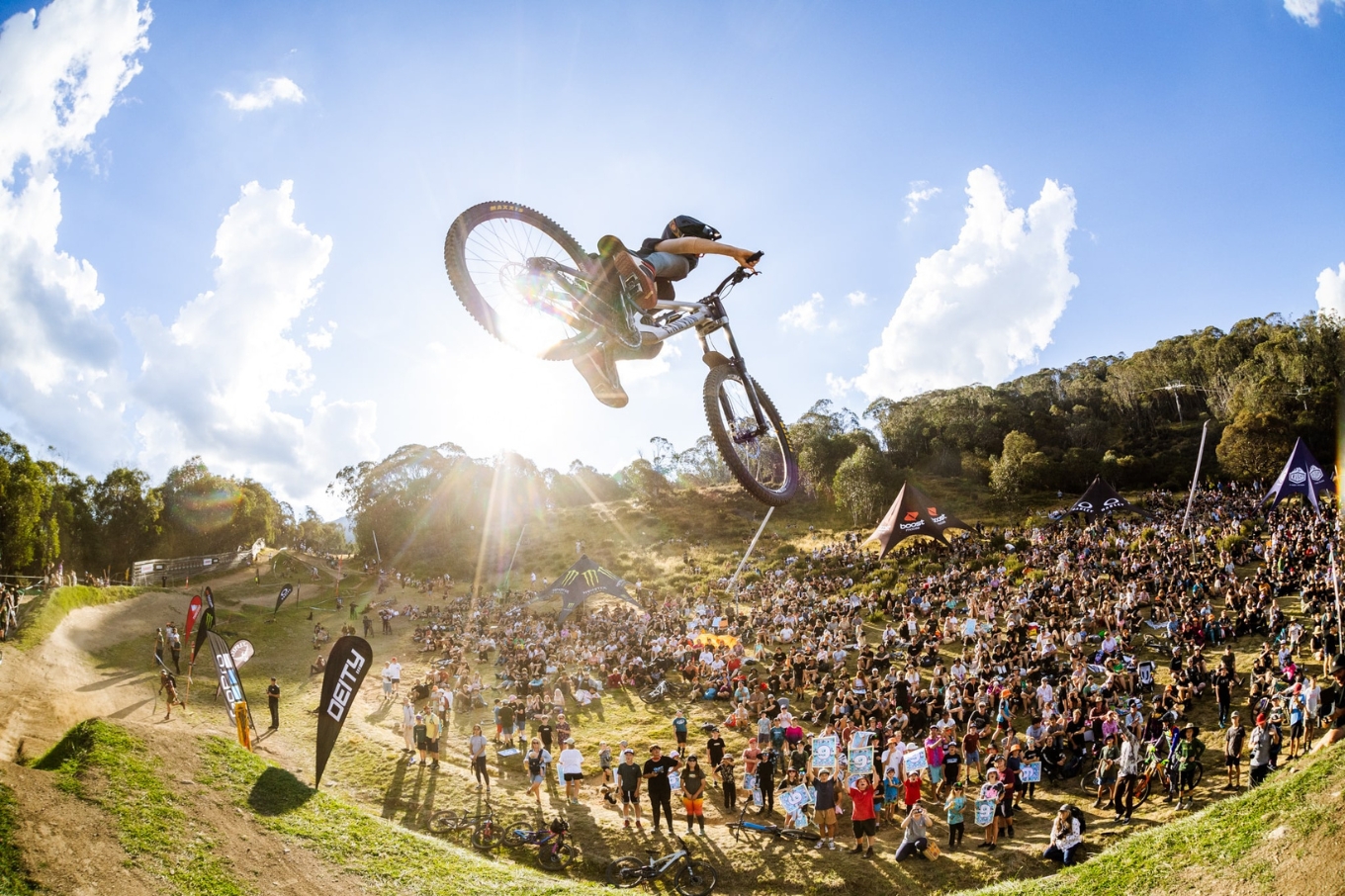Speakers Corner: Ice Cream buckets and bell ringings
Have you had a big crash and kept on riding?
We see it plenty of times in the World Cup downhill racing, and in the World Cup XCO – plus in freeride videos. What makes mountain bikers so special when other sports treat head injuries with more caution?
When was the last time you crashed and hit your head? Did you get straight back up? Did you seek medical attention?
Back in the day, football players would be knocked out cold, get slapped in the face and sprayed with water until they roused, then be back playing in a few minutes, lolling all over the field. Now, football codes all have stringent head-injury protocols after a spate of NFL players in the USA were diagnosed with Chronic Traumatic Encephalopathy (CTE) after a long career of head-knocks. CTE has been linked to increased rates of dementia, cognitive impairment, and personality changes.
While concussion can be diagnosed from a single traumatic event, these longer lasting changes often take a much longer time to appear.
Perhaps we should unpack what a head injury is.
What is a head injury?
The Monroe-Kellie Doctrine is, as a university lecturer once explained, the law relating to the physiological phenomenon of the brain and skull; essentially that the brain is a big squishy thing with a complex vasculature, bathed in spinal fluid, which is stuck inside a hard box (your skull). A rapid acceleration/deceleration or direct blow can cause the ratio of these constituents to increase (such as in the case of a cerebral bleed), causing intracranial pressure to increase and resulting in much badness, including herniation, changes in conscious state and in the worst case, death. A direct blow isn’t necessary to create trauma, a sudden acceleration/deceleration can create the shredding forces that create neuron damage.
Head injuries are classified using a scale called the Glasgow Coma Scale (GCS), and sorted into minor, moderate and severe depending on the best response to verbal, motor and eye assessments. But GCS has limitations; someone can present fully orientated, without a loss of consciousness, and still have a concussion. In fact, CT scans can come back clear and the patient can still be concussed.
Most of us will know the obvious signs of a moderate to severe head injury; changes in conscious state, nausea and vomiting, severe headache, inability to talk, memory loss, obvious head trauma, dizziness, seizure and inability to walk in a straight line. What is less obvious are the more subtle, occult signs of concussion post-trauma; blurred vision, photosensitivity, emotionality, difficulty concentrating, fatigue, irritability, memory difficulties, decrease in balance, general headache, aggression, insomnia, and changes in reaction time.
The thing is, the brain has had a big knock and requires rest to repair neurons and get back to normal function. That doesn’t mean hopping back on your bike and riding, it means complete lack of stimulation and resting until symptom free.
But we have HELMETS guys, it’s going to be OK!
These ice cream buckets we pretend are adequate as protective equipment, do sweet F.A. when it comes to these sorts of injuries. If your head hits the ground, then sure, you may stop some bleeding and an open head injury, but the physiological impact on the important stuff inside your skull is much the same.
Yes, helmets have their place. But they’re not the be all and end all and certainly not insurance against concussion or a more severe head injury.
The features we tackle are getting bigger and more technical in both XCO and DH racing, let alone things we choose to attempt when trail riding. Yet XCO riders ride along with the equivalent of a reinforced ice-cream bucket on their heads. With current trends in XCO courses, many of the features would easily form part of a DH or gravity race… but raced without a full face helmet. The risk is real!
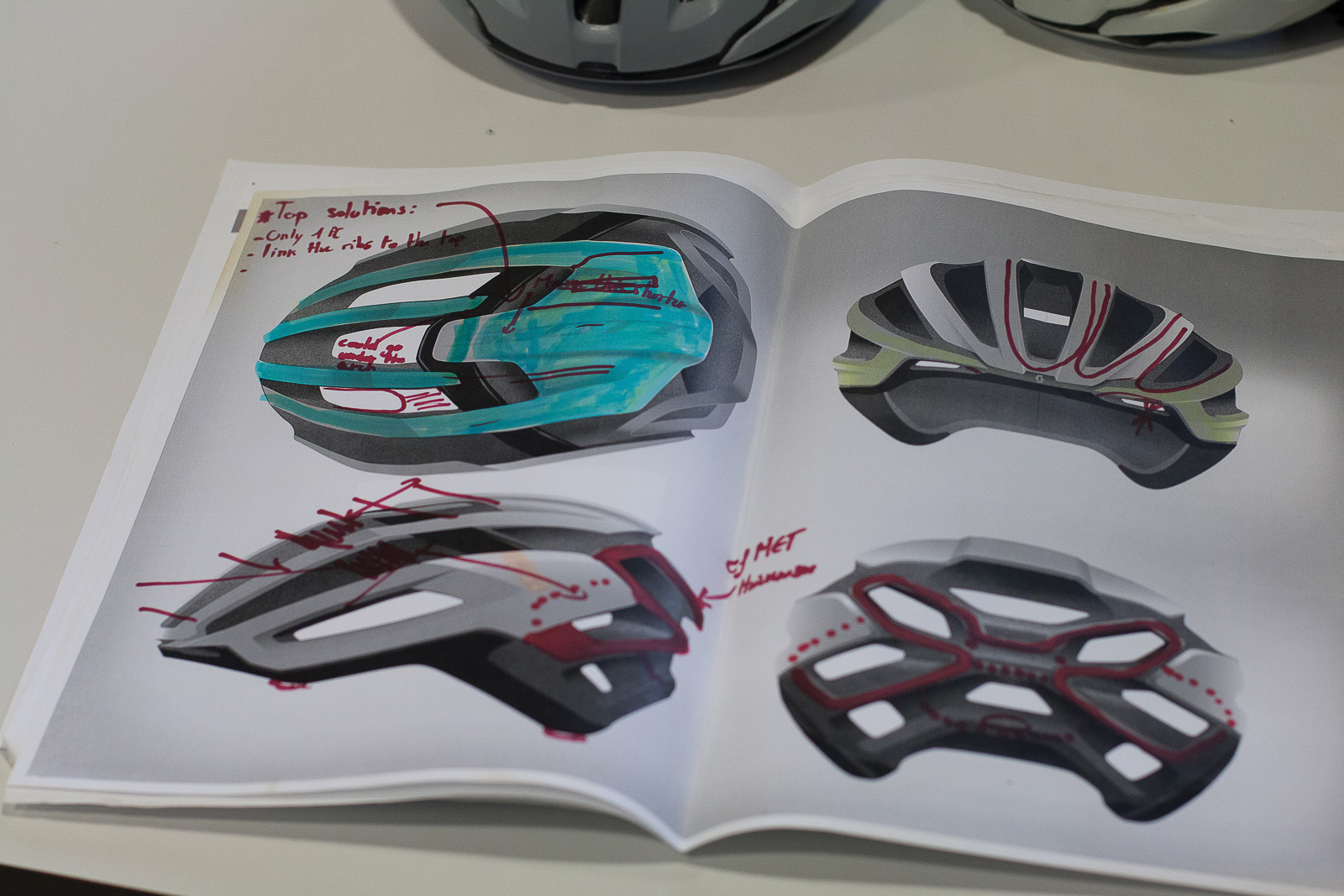
I doinked my noggin’, what to do?
Emily Batty raced at the Cairns World Championships and crashed down the infamous Jacobs Ladder technical feature just days before she lined up for the main race. She lined up on the day and raced to 7th place. While you may think ‘wow she’s so tough!’ those with an understanding of the impact of concussion, likelihood of secondary injury, and her risk of degenerative brain disease in the future will be strongly in the camp of ‘wow, that was pretty stupid’.
The problem is that when you have a head injury you lack the objectivity to adequately assess your own capacity. You’re at a higher risk of falling due to neurological changes, and have a very real risk of further injury.
Many may defend Batty for lining up at the World Champs; stating that it’s a huge race in her career and she was cleared by the hospital, so why shouldn’t she race?
Well, the emergency department is there to stabilise critically ill people and discharge home to further care and specialist referral, if required. Being discharged from hospital is not the same thing as being given the all clear to race; and without a head injury protocol–at the world level–the UCI leaves it up to the doctors, coaches and personnel from each country to make that call for, and with the athlete. The problem is that call–especially when the rainbow stripes are on the line–may be at odds with the athlete’s long term health.
It’s not just the UCI: neither Cycling Australia or MTBA have a head-injury protocol (though through discussion with MTBA it was revealed they are in the process of rolling out a concussion protocol and App for assessing on-field injuries).
What all these organisations do have is a Commissaire protocol. A podium protocol… a race bunting protocol… even a hot weather event protocol, but head injury? Nope. Not at all.
And this I find pretty remiss.
What needs to be done?
Most coaches aren’t health professionals or versed in the intricacies and subtleties of head injuries. Even emergency departments are there to assess, stabilise and refer on; not to prohibit athletes from racing. Without governing bodies implementing a head-injury protocol, concussed players will continue to put their best interests last and head out to race, even when slightly impaired, risking further injury and disability.
Football codes and USA Cycling have developed a head injury protocol, and there are a myriad of resources available such as the Sports Concussion Assessment Tool (SCAT-3) utilised by FIFA, the International Rugby Board and the IOC. Yet the cycling bodies within Australia have nothing.
Cycling Sports bodies; get your act together. Consult leading figures on sports-related head injuries, check out the SCAT-3 assessment tool, get some coaching resources together, educate clubs and athletes and get a protocol rolling.
Because bike riding is futile without a brain that functions.

